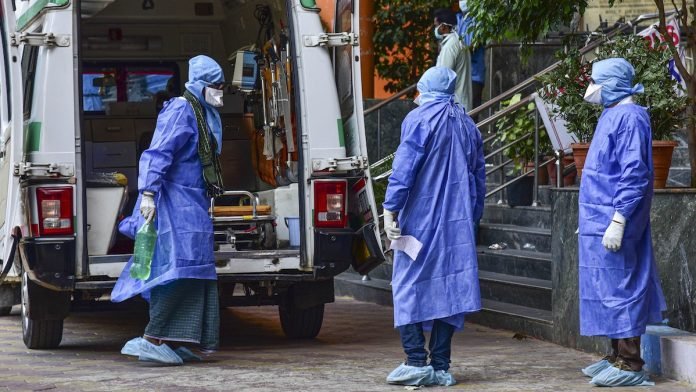India has the world’s fastest-growing outbreak of COVID-19 in absolute numbers, registering more than 5·6 million infections, according to the WHO, despite a quick response at the beginning of the pandemic.
Drastic rise in numbers at home notwithstanding, restrictions started to be relaxed in June. The pattern of propagation in India is nuanced and complex under these troubling national statistics, with marked variations between states and between rural and urban areas.
Cities like Kolkata and rural areas in northern India were initially spared the outbreak, though Delhi was at the forefront of the first wave with close international relations.
Even so, a dangerous time is clearly facing India. In many respects, particularly for such a large and diverse population, the country has responded well. In March, India instigated a national lockdown, which WHO praised.
During the lockdown time, the supply of tertiary treatment, including access to specialized equipment like fans, was increased. The number of tests was also rapidly increased, with India being the first to introduce technologies such as pooled tests. India has also taken the lead in developing and manufacturing a vaccine through both domestic vaccine candidates and producers like the Serum Institute, which has been developing production capabilities for internationally produced vaccine candidates.
For many people, the lockdown created a parallel crisis as hunger soared, and many migrant workers walked long distances home. India’s GDP was already declining before COVID-19 but the contraction of almost 25 per cent year on year in the quarter of April to June could make India one of the worst affected countries economically.
As the outbreak has spread to smaller urban areas and villages from its initial foothold in counties, pre-existing inequalities in health care access have become increasingly significant. India’s rural health infrastructure may be sparse, and some smaller private hospitals have recorded shortages of equipment, especially oxygen.
Most notably, alongside the ongoing relaxation of constraints, the increasingly rising case numbers create an environment of fatalism combined with false optimism that undermines the successful use of non-pharmaceutical treatments such as masks and physical distancing.
The outbreak in India is far from over, with a potentially huge burden of mortality and morbidity to come unless public health interventions are used and adhered to. It would be difficult to stem the outbreak without straightforward and truthful disclosure of the threats of COVID-19 to the population.
According to news reports, hours before the national lockdown was declared, Prime Minister Narendra Modi told India’s largest media organizations’ owners and editors that it was necessary to counter the spread of pessimism, cynicism, and rumor. Several specialist scientific organizations in India seem to have felt this burden to stop negative news and to provide reassurance.
Experts have singled out the Indian Council of Medical Research (ICMR) for straying from scientific facts, being at worst politically motivated and at best excessively optimistic. A letter from ICMR Director-General Balram Bhargava claimed that the ICMR intended to launch a coronavirus vaccine on August 15 (Indian Independence Day; a deadline considered by most medical experts to be unrealistic); ICMR supported hydroxychloroquine treatment despite insufficient evidence, and news reports say that data on coronavirus infection were omitted from a scientific paper.
As detailed in a recent World Report, the transparency of data on COVID-19 cases and deaths, in particular those underpinning the case fatality rate, has also been challenged. A case fatality rate of 1·8 per cent, far lower than the recorded rate in other countries, is reported by the Indian government, but it is difficult to know if the figures are comparable.
Hope is important, and remembering accomplishments, especially during a pandemic, is vital. But portraying India’s current situation with a too optimistic spin not only clouds the truth but also hampers crucial initiatives in the field of public health.
Perpetuating unrealistic claims or failing to honestly disclose bad news causes public and health care practitioners confusion, preventing people from taking preventive action or seriously taking messages from public health.
To lead the country through the COVID-19 pandemic, India has expertise in medicine, public health, science, and manufacturing. The country’s leaders need to value scientific evidence, expert commentary, and academic freedom to capitalize on these qualities, and not provide false optimism.








